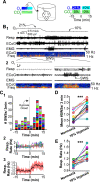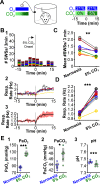Respiratory alkalosis provokes spike-wave discharges in seizure-prone rats
- PMID: 34982032
- PMCID: PMC8860449
- DOI: 10.7554/eLife.72898
Respiratory alkalosis provokes spike-wave discharges in seizure-prone rats
Abstract
Hyperventilation reliably provokes seizures in patients diagnosed with absence epilepsy. Despite this predictable patient response, the mechanisms that enable hyperventilation to powerfully activate absence seizure-generating circuits remain entirely unknown. By utilizing gas exchange manipulations and optogenetics in the WAG/Rij rat, an established rodent model of absence epilepsy, we demonstrate that absence seizures are highly sensitive to arterial carbon dioxide, suggesting that seizure-generating circuits are sensitive to pH. Moreover, hyperventilation consistently activated neurons within the intralaminar nuclei of the thalamus, a structure implicated in seizure generation. We show that intralaminar thalamus also contains pH-sensitive neurons. Collectively, these observations suggest that hyperventilation activates pH-sensitive neurons of the intralaminar nuclei to provoke absence seizures.
Keywords: epilepsy; neuroscience; pH; rat; respiration; seizure; thalamus.
© 2022, Salvati et al.
Conflict of interest statement
KS, GS, AL, MR, PG, SA, MB No competing interests declared
Figures









References
-
- Abbott SBG, Stornetta RL, Fortuna MG, Depuy SD, West GH, Harris TE, Guyenet PG. Photostimulation of Retrotrapezoid Nucleus Phox2b-Expressing Neurons In Vivo Produces Long-Lasting Activation of Breathing in Rats. Journal of Neuroscience. 2009;29:5806–5819. doi: 10.1523/JNEUROSCI.1106-09.2009. - DOI - PMC - PubMed
Publication types
MeSH terms
Substances
Associated data
Grants and funding
LinkOut - more resources
Full Text Sources
Medical
Research Materials

